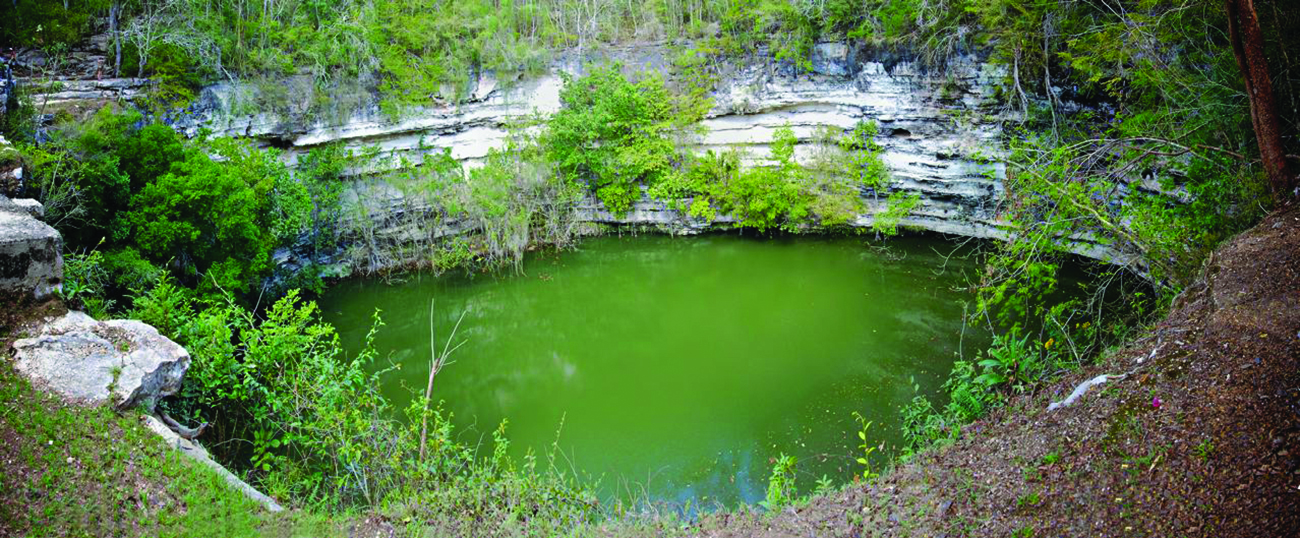89 Introduction
Chapter Outline
90. Ionic Compounds in Aqueous Solution
91. Brønsted-Lowry Acids and Bases
92. pH and pOH
93. Relative Strengths of Acids and Bases: ionization constants.
94. Relative Strengths of Acids and Bases: effect of molecular structure
95. Hydrolysis of Salt Solutions
96. Polyprotic Acids
97. Buffers
98. Acid-Base Titrations

FIGURE 89-1: Sinkholes such as this are the result of reactions between acidic groundwaters and basic rock formations, like limestone. (credit: modification of work by Emil Kehnel)
Idea Explorations
This resource adds depth to the topic by offering perspectives or examples not covered in the core materials.
Instructions:
- Access the links by selecting the URLs below. If you encounter any accessibility issues, please let your instructor or support team know so alternative formats can be provided.
- Read or explore the content at your own pace. You are not required to memorize details but reflect on how the main idea connects to the chapter themes.
Links:

